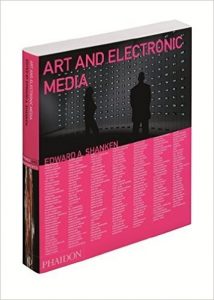Beacon is an interactive kinetic light installation created by Chris O’Shea, in collaboration with Cinimod Studio. O’Shea likes to creates experiences that playfully challenge our perception of spaces and objects, such as Beacon. “This installation will create a kinetic light space that has a mind of its own, interacting with the surroundings and its visitors. Emergency beacon lights have been modified to create an immersive and powerful experience. Visitors will be able to navigate through a grid layout of these beacons, creating an engaging manipulation of lighting and perceptions. (…) The installation exploits a transfer of technologies from existing industrial products. The beacon lights have had their internal parts replaced with custom hardware, enabling the rotation of the reflector and lamp brightness to be individually controlled. Thermal imaging cameras have been adapted to track the participants’ movement through the space. Beacon is orchestrated in real-time by a bespoke control system, which uses tracking information from the cameras to coordinate an interactive and highly responsive behaviour.” [1]
The usual effect it has on the participant is shock, uneasiness and/or enjoyment. Walking through the installation makes the particapant very visible, the installation literally points out that there is someone near through emergency lights and sounds. That person may or may not like the attention that is given, but it is certain that privacy at the installation is quite impossible. Also, with the bright red and yellow lights and hard sounds, it seems like a warning is coming. Perhaps, the art work shows visitors how privacy can be something to protect? Especially in a world where people’s movements are increasingly being tracked by new technologies.
Beacon is similar to Field of Interaction, an interactive light installation by Piotr Kowalski. To Kowalski, interaction is everywhere, as all processes, objects and beings affect each other and therefore create an intertwined destiny. In his environmental piece, visitors walk through a passageway and alter it patterns of illumination. There is a vague notion of a nocturnal cityscape because of the movement, facade-like structures and flickering lights. [2] The affecting of the surroundings is just like the visitors that alter the lights and sounds of Beacon. But unlike Field of Interaction, Beacon is not a silent artwork. Sound (or the absence of it) gives an interesting or unusual dimension to the pieces, which is the main difference of the art works.
Lev Manovich says that “computer interactive art takes ‘interaction’ literally, equating it with strictly physical interaction between a user and a artwork (pressing a button), at the sake of psychological interaction.” [3] For very interactive artworks, this is usually what ‘charged environments are. Beacon is a good example of this. The visitors participate with the installations in a way that goes beyond just pressing a button, because the artwork itself senses the participants. Psychological effects are created when the visitors hear and see the lights and sounds and realise they are always watched.
Sources:
[2] Edward Shanken, red. Art and Electronic Media. London: Phaidon, 2009: p. 109
[3] Edward Shanken, red. Art and Electronic Media. London: Phaidon, 2009: p. 223, 224
